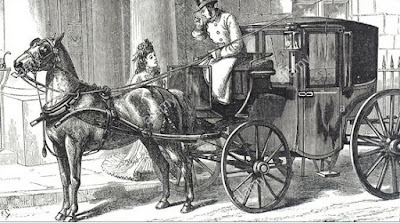With the advent of four door sedans, why did people continue to buy cars with only two doors? Especially through the 1960's and 1970's? Well, years ago they were less expensive but as time moved on, cars with only two doors usually offered buyers something that sedans didn't -
a styling moxie, flair and a fashion statement above and beyond the practicality first sentiment of sedans. And they were quite popular. Granted, they didn't have to compete with the likes of today's stylish, do everything cross overs, but image conscious buyers tolerated their intrinsic impracticality because they appreciated an automobile that appeared to have something more going for it than it actually had. However, it made no sense when a manufacturer offered a two-door automobile that was nothing more than its four door version. Case in point, this 1981 Lincoln Continental Town Coupe.
Granted, we were not exactly fans of Lincoln's brick-like '70's Continentals,
although...we wouldn't kick a 1970-1972 Continental Coupe out of our garage, but this soulless, slab sided beast made the rest of those oafs look like they were designed by European artisans. Seriously, Lincoln, the hell were you guys thinking here? Just like GM's much ballyhooed downsized 1977 models, Ford's "Panther-body" full size cars, introduced at Ford and Mercury for 1979 and Lincoln in 1980, were far better transportation conveyances than what they replaced but from a visceral perspective, something went awry.
Its not as though it was the first time that Lincoln did little to differentiate a two-door Continental from a four-door model save for it having two less doors. When Lincoln finally introduced a coupe version of their seminal "suicide-door" 1961 Continental in 1966, it was little more than a Continental four-door with two less doors. Although, seeing how rakish the four-door was, it made for a fine looking coupe even if there's a little too much Ford Galaxie in the granola for our tastes.

When Lincoln updated Continental in 1970, eschewing the suicide doors on the four-door for something more mainstream albeit far less distinctive, they made some effort to differentiate the coupe from the sedan. These 1970-1972 Continental coupes are, in our opinion, again, pretty neat. Not perfect, mind you - they're pretty thick south of a very low belt line and are too broad in the beam past the end of the doors. Why anyone with the means would spring for this and not a Coupe de Ville of the same era is beyond us but you know what they say about taste and armpits.

The nadir of '70's Continental design coming in 1975 with this tragic updating. GM didn't fair much better with their pillared coupes but any semblance of youthful aspiration clearly went out the fixed rear side windows here. The more formal rear rooflines extenuating the Continental's bolt straight lines that had all the styling flair of tipped over refrigerator. At least Lincoln had the good sense not to add opera windows to the Continental coupes like they did with the sedans. Lincoln had to sink these battle ships come 1980 what with the government cracking down on gas mileage regulations.

For their downsized 1980 Continentals, it appeared Lincoln used the lines of their mid to late '70's Continentals not so much as design inspiration but as a template to start from. The Ford LTD Crown Victoria and Mercury Marquis didn't fair much better but riding on a three inch longer wheelbase, the Lincoln's somehow looked even more out of proportion. How is that GM's 1977 downsized full sized cars looked nothing like what came before yet all,
well, sorry, most, were still unmistakable for what they were? Look, we get that designing an automobile is very hard but you'd think that Ford could have done a better job styling these cars than they did. Sadly, when it counted most, it appears they played it safe and it cost them. Cost them,
wait for the pun, big time.
When Lincoln moved their vaunted and venerable "Continental" moniker to a Fox-based sedan for 1982, what was the Lincoln Continental Town Car became simply, the Lincoln Town Car. There was no more "Town Coupe" and that was just as well. Why'd they even bother in the first place?
Much like the term "brougham", back in the olden days a vehicle that was a "town car" was one with an enclosed passenger compartment and an open driver's seat. "Brougham", pronounced, "brome", stems from Lord Brougham, the chap who designed the original horse drawn carriages. Somewhat ironically given the humble origins of the terms, both "town car" and "brougham" were used by various automobile manufacturers over the rest of the twentieth century to con-notate luxury.








No comments:
Post a Comment